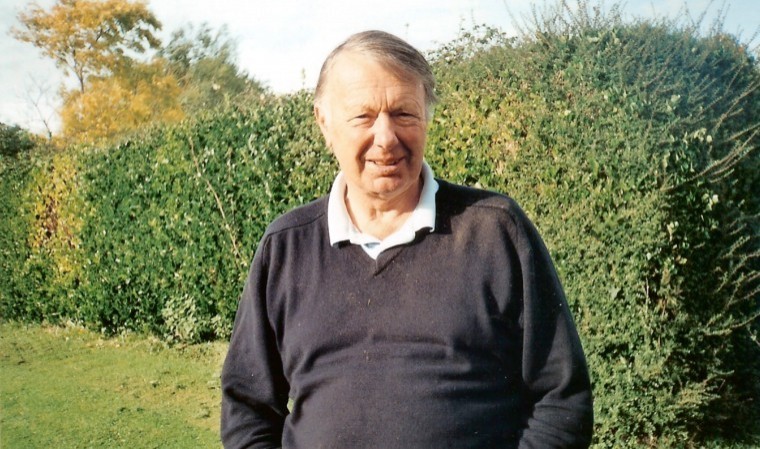It seems strange to walk out across the downland meadows and see no sign of the cows. Now instead, are the older sights and sounds which I remembered there, so long ago when, as a youngster at the end of the second war, I walked with my mother out across the hillside to visit father, then acting shepherd, among the constant bleating of his flock of Southdown ewes, most with their new lambs. He spent a couple of weeks at a time in his old shepherds hut, with little other than log stove and a wooden bed which, when he could find time to eat or sleep, served both purposes. Mother driving up every couple of days with his provisions. The pregnant sheep, folded all around close to the hut, with his dog on the alert outside, the older lambs and their mothers quietly lying around the hillsides. It was a scene many eons old.
It is the scene which now comes to my mind as I look around at the same farm, some seventy plus years later, as the meadows, filling with an agisted flock of a neighbour’s ewes and lambs, repeating exactly the same scenes from those distant years.
With the old herd all away now, gone as a complete herd, under new ownership far away, the meadows seem a different place, and there is already a much less stressful feeling. Now no longer responsible for the overall wellbeing, or expenses of running a milking herd, there is time to fully take in these familiar but changed surroundings.
Across the valley, to the South East, the constant hum of traffic along the A29 as it travels up and down ‘Fairmile Bottom’. Bury Hill, atop the South Downs to the north, leading to the Arun Valley, while to the south the ‘hotspots’ of the south coast. Above me the Rewell Wood with its huge ash, beech and yew trees, and beyond that Arundel and the English Channel.
Peaceful moments, happy contented sheep, grass now growing as it did all those years ago, slower with lesser fertiliser, and the only sign of the previously higher input dairy unit, acres of maize pushing ahead on the hillsides nearby. The crop, no longer growing for the cows, but to fuel a local anaerobic digester; in turn providing energy for the country’s ever growing needs.
In all honesty the views, while peaceful and bucolic, don’t quite give me the buzz of a herd of black and white British Friesians spread out across the pastures. But I have to forget about that, and accept the world has moved on… moved on? Not quite sure that is the right expression! Although I have accepted dairy farming has largely ceased to be the traditional, ages old, family occupation, where generation after generation followed their traditions, caring for their stock and providing healthy food for a once appreciative public. It has quite recently, become a sector which, while still providing quality food, beef and milk, is being portrayed by some as ‘exploitation of animals. Where a sad minority try to paint country people almost as purveyors of poisons and would, given a chance, like to see all stock farming become consigned to history.
I do feel so sorry for those thousands of farm kids, still out there, who want little more than to follow a career with livestock, to make a life for themselves and later their own families, just keeping cattle. I think it’s a way of life under huge pressure and, while I miss the cows, have few regrets. However it is hard to come to terms with such attitudes.
So now for the next year or so we have to tend around 50/60 store calves and Friesian Heifers on the Home Farm as they grow into strong young animals on their way to maturity. They will continue to be treated like children by my old stockman Wally Elvin, who calls them his ‘darlings’ (most of the time!) and always treats them like family until they leave us. It will be rewarding as always but, with a twinge of sadness in that the senior matrons who bore them, are no longer here; so within two years, with the calves and bloodlines gone, we will see the end of cattle on land where many of their dams and great grand dams have spent their lives under my family’s care for over 125 years.
It is all brought to an end by an increasingly unreliable supply of dedicated, skilled herdsmen. Coupled with an endless succession of Deathra officials, steadily throttling the life out of British cattle keeping as they seemingly refuse to understand why they have lost control of bovine tuberculosis and, even if they recognise the reason, seem determined to ensure the disease is never far from farmers cattle barns. Preserving jobs for life?
All around one hears tales of suspected herd breakdowns, of farms brought into radial testing with all the inconvenience involved. Yet Deathra knowingly allow poorly tested cattle in from areas where TB is rife. It seems impossible for them to accept that these beasts, brought into close proximity with previously clean herds, are the true source of infection. Instead seeking to blame farmers own biosecurity. Until they accept this, the situation hereabouts will surely continue to worsen.
Yet what is almost more frustrating than Deathra’s inaction is the fact that, because of it, in excess of 33,000 cattle are being destroyed annually as TB ‘suspects’. Yet our own recent experiences tell us that, of those animals killed, either reactors or inconclusives, none have been found to have any sign of TB. What a disgrace. What an indictment of the testing system. What a waste of public money. What a waste of animals’ lives,
And numerous farmers lives too. Yes, Deathra indeed.




